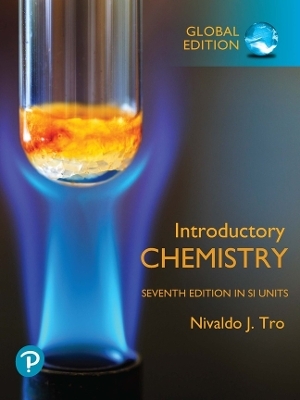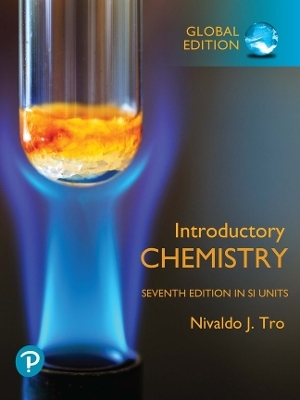
Polyurethane and Fire – Fire Performance Testing Under Real Conditions
Wiley-VCH Verlag GmbH (Hersteller)
978-3-527-60787-7 (ISBN)
- Keine Verlagsinformationen verfügbar
- Artikel merken
This work is a survey of all facets of the fire performance examination and evaluation of flexible and rigid polyurethane foams in the various fields of building construction, furniture and furnishings, transportation and electric appliances. The basic information concerning the relevance of the different test procedures allows realistic requirements to be set, guaranteeing more safety in the case of fire. The legal requirements are based on laboratory test methods and the book describes their relevance in relation to real fire scenarios. It is a must-have reference for producers, suppliers and manufacturers of polyurethanes.
Franz H. Prager gained his diploma in Mechanical Engineering from the Technical University of Darmstadt in 1960 and his doctorate from the Technical University in Aachen in 1985. He joined Bayer in 1961, where he originally worked in Fire Performance Testing, and later became head of the Fire Technology Group, which he founded within the Central Research Department in Leverkusen. He was a member of numerous national and international committees (VDE, DIN, ISO and CEN) in the various fields of construction, transportation, furniture and electrical appliances, as well as the relevant German and international association fire committees (VKE, VCI, APME, IVPU/BING, ICUP/III and ISOPA). In 1990 Dr. Prager received the Otto Bayer Medal for his commitment to large scale testing under extreme conditions and for his initiation of the Bayer Fire Test House. Helmut Rosteck received his diploma in Mechanical Engineering after studying at the Technical University of Magdeburg and Dresden. Following this, he worked at the testing station for flow machinery in Dresden, before joining the dynamo plant of Siemens Schuckart in Dresden. He moved to Bayer in Leverkusen in 1964, where he was originally a member of the planning construction section and in 1976 joined the Fire Technology Group in the Central Research Department. In Fire Performance Testing he was responsible for fire reaction testing in the laboratory as well as on a large scale in the construction sector, transportation and the furniture and furnishings field.
1 Introduction.2 Fire-Protection Problems.2.1 Definition of the Fire-Performance Criteria.2.1.1 Formation of Flames.2.1.2 Course of Fire.2.1.3 Characteristics of Fire Behavior.2.2 Essential Fire Scenarios.2.2.1 Pyrolysis.2.2.2 Oxidative Decomposition.2.2.3 Propagation of a Self-sustained Smoldering Fire.2.2.4 Fully Developed Fire with a Flashover Situation.3 Research of Causes of Fires.3.1 General Experience of Fire Statistics.3.2 Knowledge of Fire Risks.3.3 Experience with Fire Spread - Fire-Detection Units and Sprinklers.3.4 The Time of the Fire Initiation as a Classification Criterion.4 Preventive Fire Protection - National Requirement and Classification Systems.4.1 Building Section.4.1.1 United States of America.4.1.2 European Requirement and Classification Profiles.4.1.3 Eastern Europe and Far East.4.1.4 International Standardisation - European Harmonisation.4.2 Furniture and Furnishing.4.2.1 American Testing and Evaluation Criteria.4.2.2 European Test and Evaluation Criteria.4.2.3 Far East, e.g. Australia.4.3 Transportation.4.3.1 Road Traffic.4.3.2 Aviation Sector.4.3.3 Shipbuilding Sector.4.3.4 Railway Sector.4.4 Electrical Engineering.4.4.2 Proof of the Resistance against Overheated (Hot and Glowing) Wiring.4.4.3 Thermal Stress with Flames.4.4.4 Side Effects of a Fire.5 Material-specific Fire-Performance Characteristics of PUR.5.1 Polyurethane Production.5.2 Risk of Ignition in the Production and Storage Area.5.2.1 PUR Raw Materials - Basic Characteristics.5.2.2 Laboratory Research Work with the Tewarson Apparatus.5.2.3 Drum Tests and Supplementary Pool-Fire Experiments.5.3 Polyurethanes.5.3.1 Material-related Igniting Risks of Polyurethanes.5.3.2 Material-specific Burning Behavior of Polyurethanes.6 Use and Interpretation of PUR-Test Results Determined under Enduse Conditions.6.1 Relevance of Combustion Systems.6.1.1 Relevance of the Procedures for the Risk of Ignition.6.1.2 Relevance of the Procedures for the Assessment of the Side Effects of a Fire.6.2 Relevance of the Evaluation Criteria.6.2.1 Risk of Ignition.6.2.2 Burning Dripping.6.2.3 Relevance of the Criteria for the Evaluation of the Heat Release.6.2.4 Relevance of the Evaluation Criteria of the Smoke Potential.6.3 Relevance of the Requirement Profiles.6.3.1 Relevance of Full-scale Field Trials.6.3.2 Relevance of the Investigation Results Concerning the Cause of Fires.6.3.3 Orders Concerning the Risk of Ignition.6.3.4 Demands Concerning the Heat and Fire-Gas Liberation.Summary.References.Abbreviations list.Norm list.Index.
| Verlagsort | Weinheim |
|---|---|
| Sprache | englisch |
| Gewicht | 10 g |
| Themenwelt | Naturwissenschaften ► Chemie |
| Technik ► Bauwesen | |
| ISBN-10 | 3-527-60787-0 / 3527607870 |
| ISBN-13 | 978-3-527-60787-7 / 9783527607877 |
| Zustand | Neuware |
| Haben Sie eine Frage zum Produkt? |
aus dem Bereich


